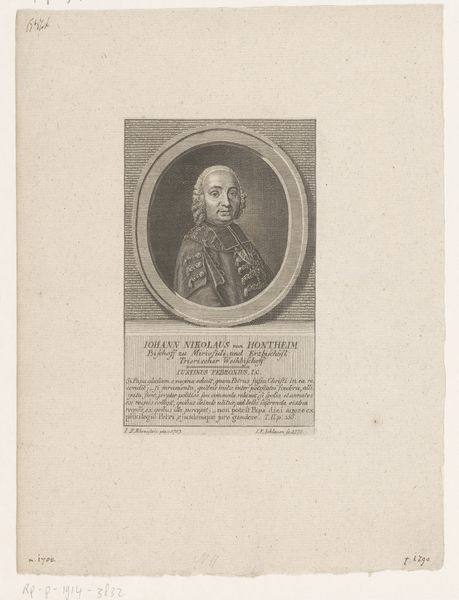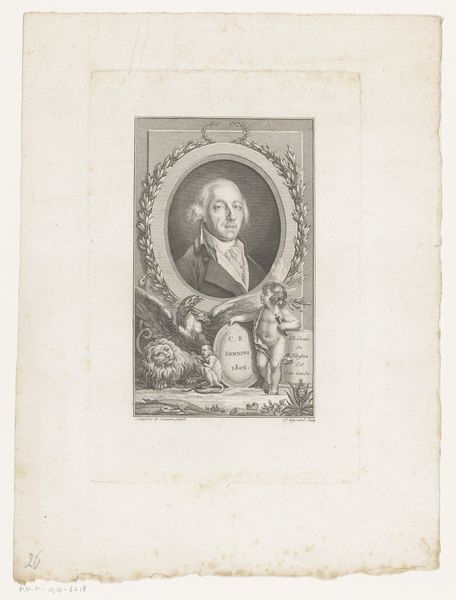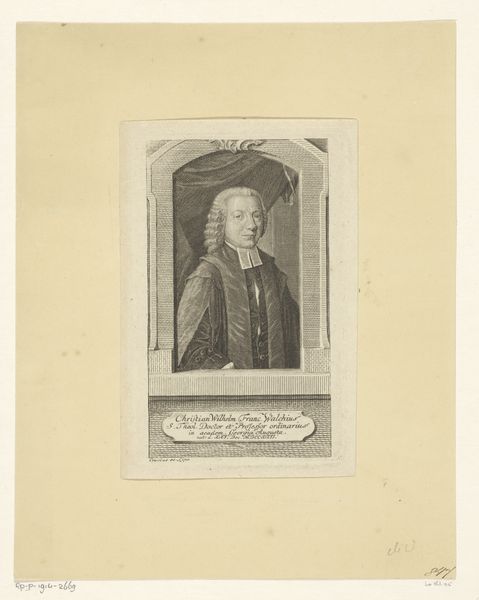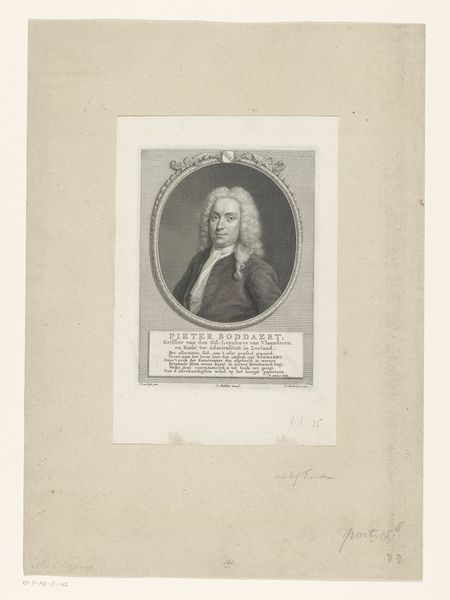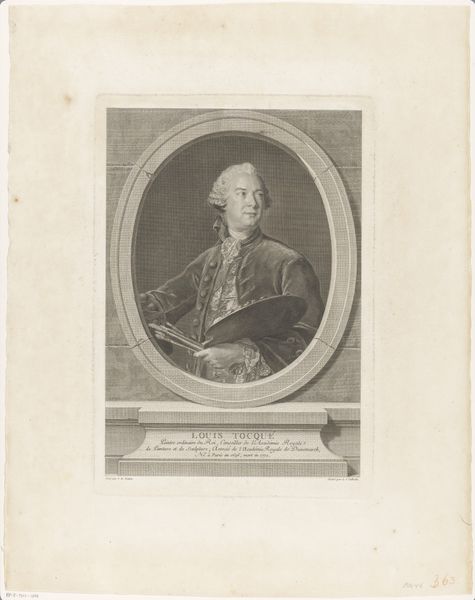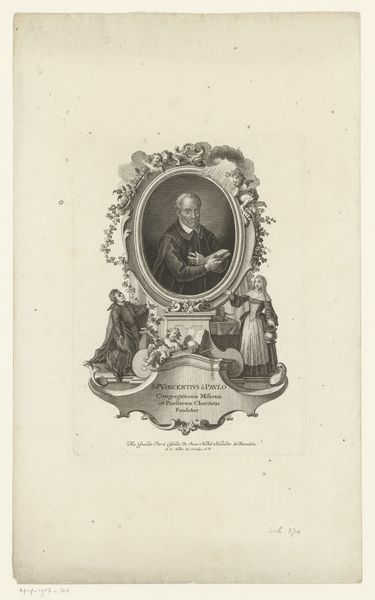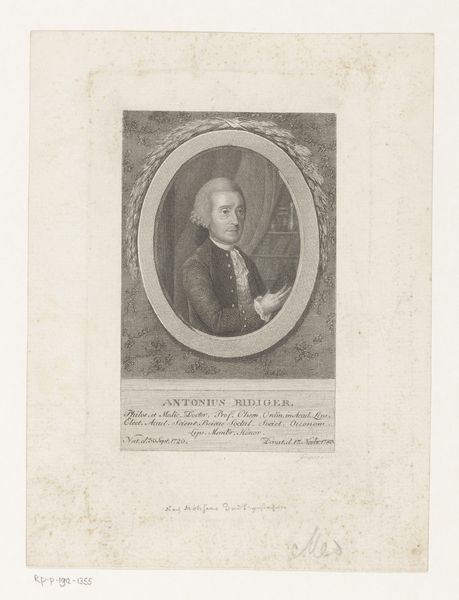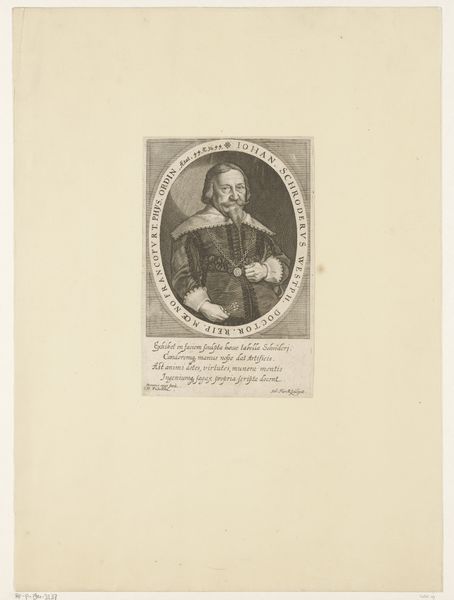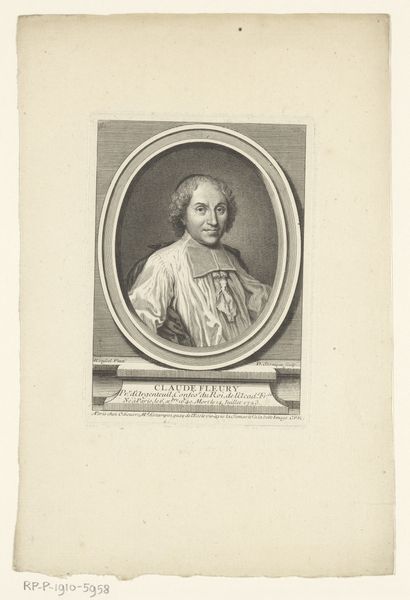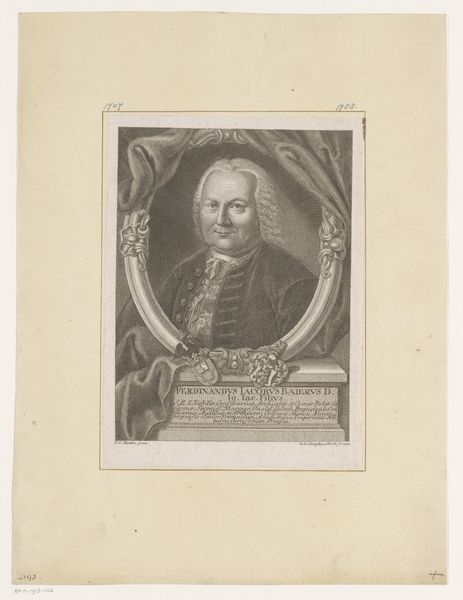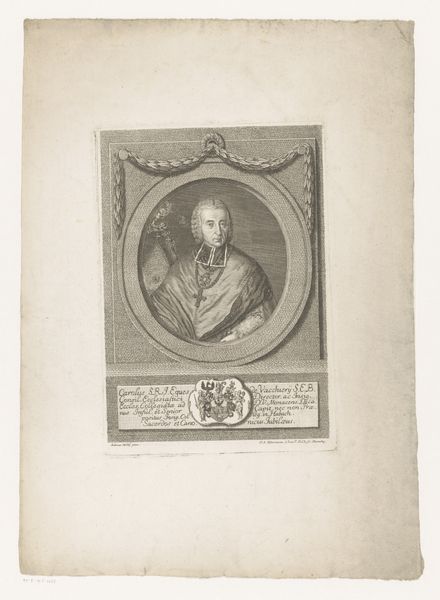
Dimensions: height 172 mm, width 104 mm
Copyright: Rijks Museum: Open Domain
Editor: Here we have "Portret van Antoine de Sartine," an engraving from between 1758 and 1806, currently residing at the Rijksmuseum. It's rendered in this incredibly precise, almost photorealistic style for an engraving, and its focus on representing status, title, and civic contribution in Antoine de Sartine's lifetime seems clear. What are your thoughts? Curator: It's fascinating how this piece uses the conventions of portraiture to cement a public image. Consider the theatrical framing – the laurel wreath, the inscription emphasizing his ministerial role – and how these elements perform a function beyond simple likeness. This wasn't just about depicting Antoine de Sartine; it was about constructing a very particular narrative of power and service. What does the style – and it's debt to the Baroque tradition– suggest about how people in power at this time might want to be seen? Editor: Right! The Baroque influence feels like it reinforces a sense of authority. Maybe it suggests they wanted to connect themselves with past eras of success and prestige, as if they see themselves as inheritors of that legacy? Curator: Exactly! And look at the medium – engraving. It suggests wider distribution and reinforces this wasn't just art for an elite collector. Think about the role of such images in shaping public perception and reinforcing hierarchies. Do you think it succeeded in projecting the intended image? Editor: I wonder… there’s something almost… generic about the portrait itself, especially in comparison to the grandeur of the frame and the inscription. Maybe that tension undermines some of the intended effect. Curator: An interesting point! Perhaps the limitations of the medium and the conventions of the time placed constraints on truly individual expression. Regardless, analyzing such works gives us insight into how power was visualized and disseminated. Editor: Absolutely! Seeing how art intersects with social and political intentions really sheds light on the relationship between the elite and the public they wished to govern.
Comments
No comments
Be the first to comment and join the conversation on the ultimate creative platform.
